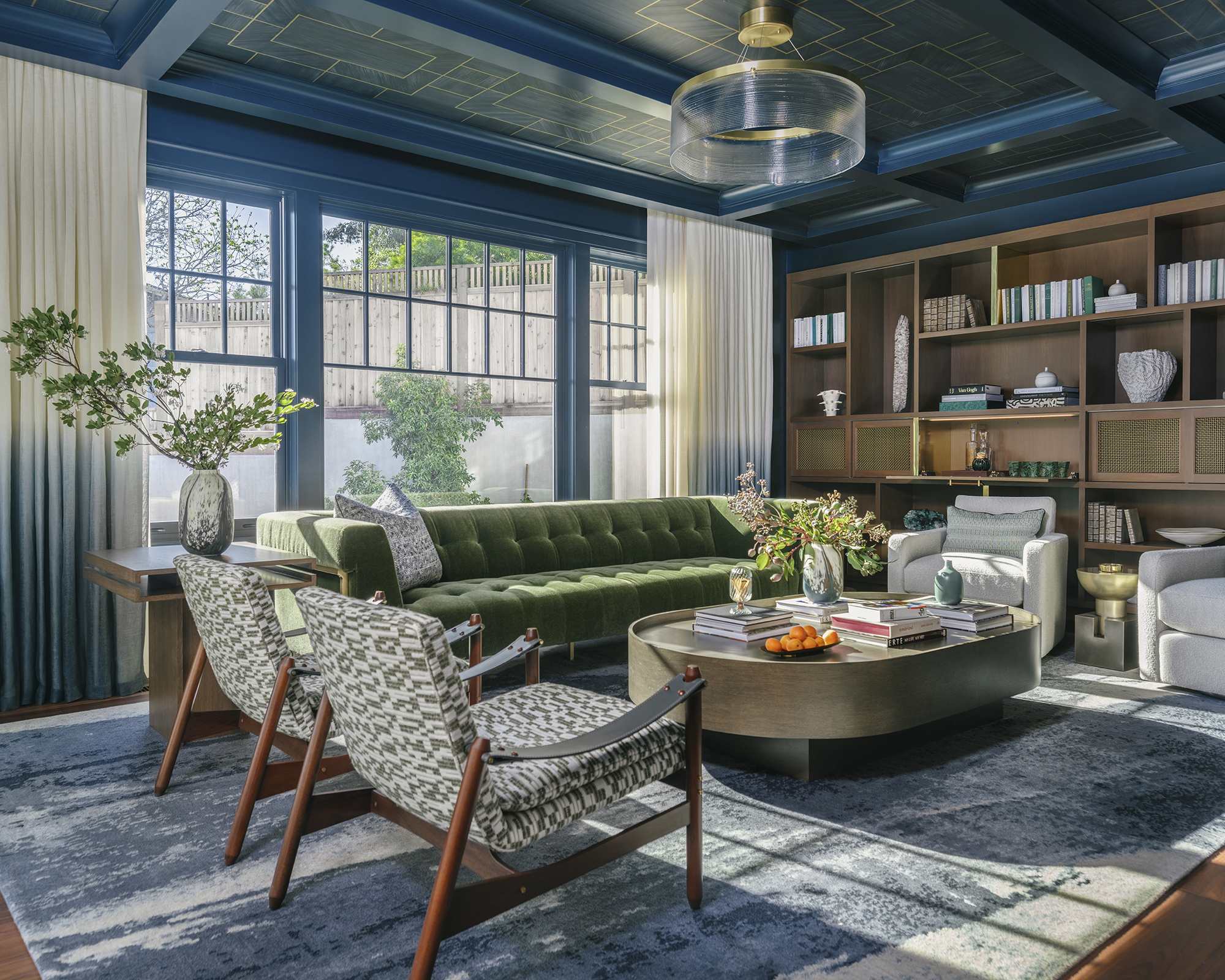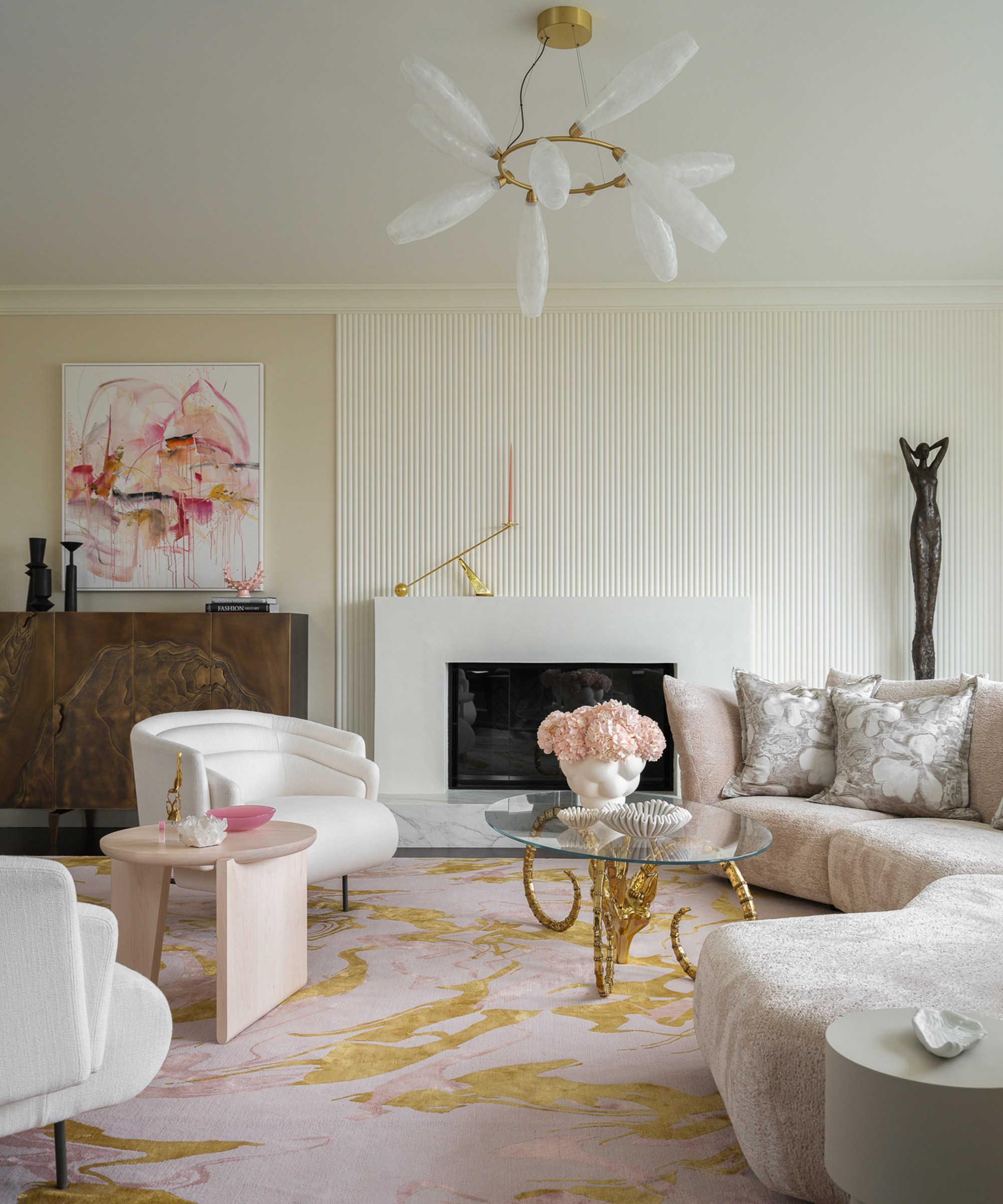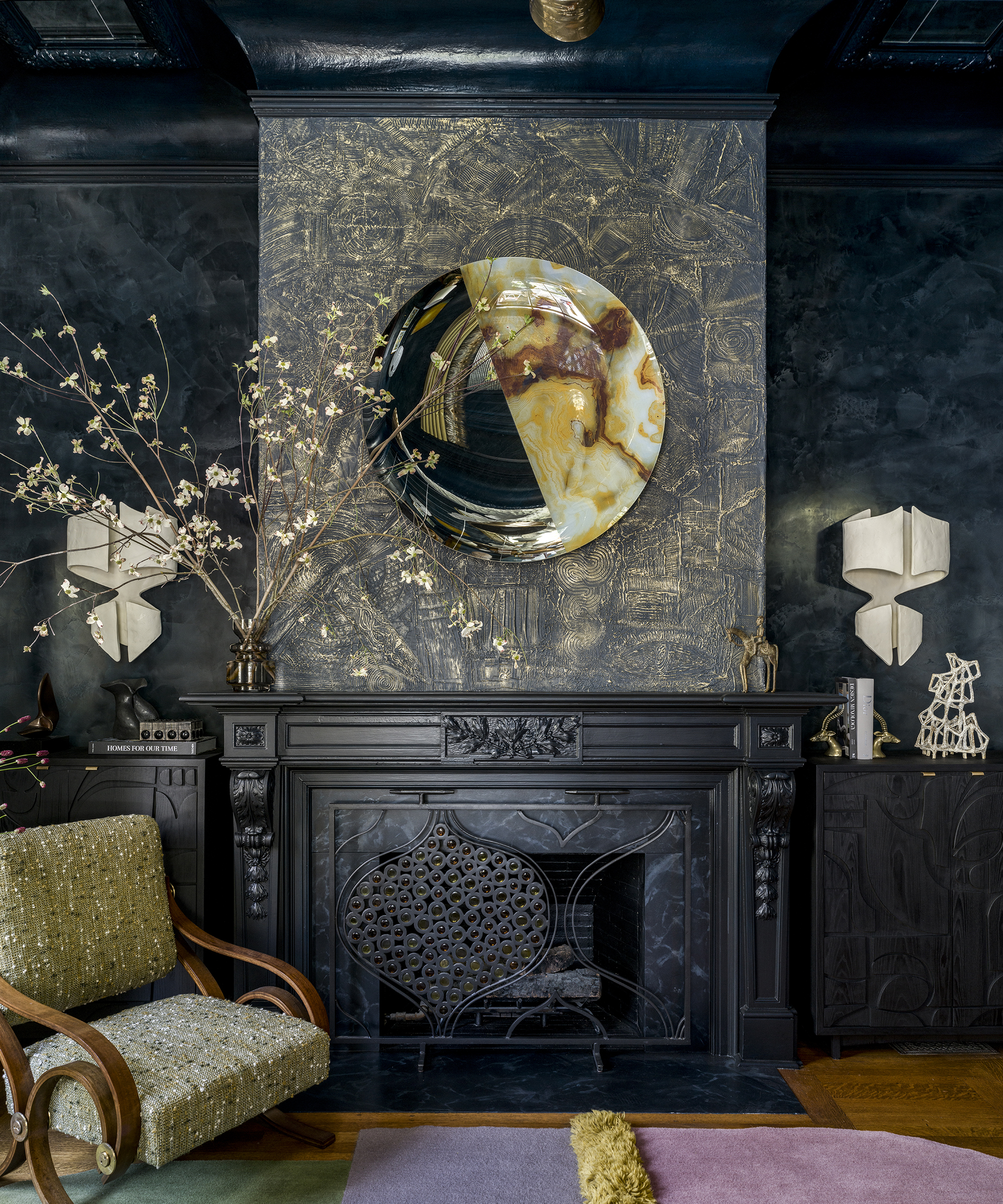'Not every piece of furniture needs to be as important,' says designer Tineke Triggs, who knows what makes a room comfortable – and what you don’t need to stress over
From gilded ceilings to jewel-toned walls, Tineke Triggs shows how fearless design still leaves room to relax

San Francisco–based interior designer Tineke Triggs has earned acclaim for crafting spaces that are as daring as they are meticulously curated. Renowned for her talent in balancing bold creativity with everyday livability, she transforms interiors – whether through a jewel-toned living room, a transformative ceiling mural, or a home layered with art and narrative – into immersive, unforgettable environments.
Her work is intensely personal, shaped by her perspective as a visual thinker who can translate a client’s essence into design, even when they struggle to articulate it themselves. Celebrated for her collaborations with artisans and her playful layering of pattern, texture, and custom details, she infuses each project with rhythm, character, and storytelling. In this conversation, she explores her approach to designing homes that are both comfortable and full of personality, the often-overlooked importance of ceilings, and why narrative lies at the heart of her design philosophy.

Your rooms feel both fearless and finely tuned. How would you describe your approach to decorating?
Each project has its own distinct identity. I start by creating a persona in my mind – a sense of who will inhabit the space. I’m dyslexic, and growing up, sketching was a peaceful refuge for me. Even now, I rely on visual cues to understand a person. Often, clients don’t fully know themselves, so I try to imagine who they truly are beneath the surface. There’s often someone deeper, more serene, or far bolder than the person you first meet. Once I have a sense of that inner character, I design a space that feels uniquely comfortable for them – one that reflects their voice, their rhythm, and the way they want to live.
What does comfortable look like for you?
It shouldn’t feel over-styled – like every detail has been obsessively curated. Don’t overthink design. It’s like weddings: I remember walking down the aisle and barely noticing the flowers I’d spent hours planning. The lesson is the same for interiors – don’t get caught up in the things that don’t really matter.
What does matter, then?
Design expertise in your inbox – from inspiring decorating ideas and beautiful celebrity homes to practical gardening advice and shopping round-ups.
To me, a home’s decor is all about storytelling – what story it tells matters most. I’m not a minimalist; I love saturating every plane with layers of color and meaning, and each piece of art on the walls carries a story. Every element in my home – from accessories to carpets to antiques – exists to draw you in and reveal something about who I am. That said, not every piece of furniture needs to carry that weight; it can simply be comfortable and beautiful without being a statement. In short: walls tell the story, accent pieces matter, and almost everything else can just be functional.
When you talk about walls, I know you mean ceilings. Many of your projects feature ceiling murals – what draws you to highlight them in your designs?
In life, we spend so much time looking down at our phones, but we should be looking up, outward, wider. A ceiling is a chance to expand a space – it completes the room. If a ceiling isn’t considered, it feels like it was left out. For example, the decorative artist Caroline Lizarraga and I created a ceiling wallpaper in gilded gold, with paint dripping down the sides of the walls. That kind of imagination and custom detail is what excites me. I love it when a space surprises you.
How do you pick the pattern for the ceiling?
It really depends on what the project calls for. In one case, the wallpaper itself was the standout element. Recently, I designed a 'man cave' with a bar and table, where the ceilings were low. I painted the room a saturated gray, but the ceiling started to dominate, so I added an agate-inspired design that looked like it was dripping down from above. My general rule is that when walls are dark, the ceiling should become the focal point – it’s where you can really play and create drama.

Do clients tend to let your imagination run wild?
Sometimes a client is very conservative, very traditional, but even then, I push the boundaries as much as I can. For one project, everything was blue, so I added a feathered wallpaper on the ceiling. It was a bold statement, but never overdone. That’s my guiding principle in everything I do – I can’t handle over-stimulation, a habit born from having ADD, so balance is key.
Yes, there are always moments of calm in all of your projects. How do you keep it feeling inviting rather than dramatic?
It always comes back to livability. I’m drawn to things that feel comfortable, and comfort can still be bold. Take jewel tones, they’re rich and vibrant, yet still inviting because they echo colors found in nature. I love metallics too – being a Leo, I naturally gravitate toward a little sparkle – but there’s a limit. Too much opulence feels overwhelming, and I like my spaces to feel lively, not overdone.

Your spaces often unfold in layers, with custom lighting, sculptural seating, and rich textures. What’s your approach to creating a sense of rhythm and depth within a room?
I start by collecting everything that catches my eye – throwing pieces into a basket and letting them accumulate. Then I begin refining, taking things out as I build a presentation board. If you watch me at work, it might look chaotic. I often create 20 schemes at once, mixing fabrics and wallpapers in groups that just keep growing. It’s all because I need to see everything visually – it’s how my mind works.
How do you know when you’re done?
The key to completing a home isn’t the furniture – it’s everything else. An unfinished space is missing art, accessories, plants, flowers, books, blankets, and pillows – all the elements that make it feel lived-in and cozy. Once those details are in place, the home truly feels complete.
See more of Tineke's work at Tineke Triggs
Pip Rich is an interiors journalist and editor with 20 years' experience, having written for all of the UK's biggest titles. Most recently, he was the Global Editor in Chief of our sister brand, Livingetc, where he now continues in a consulting role as Executive Editor. Before that, he was acting editor of Homes & Gardens, and has held staff positions at Sunday Times Style, ELLE Decoration, Red and Grazia. He has written three books – his most recent, A New Leaf, looked at the homes of architects who had decorated with house plants. Over his career, he has interviewed pretty much every interior designer working today, soaking up their knowledge and wisdom so as to become an expert himself.
You must confirm your public display name before commenting
Please logout and then login again, you will then be prompted to enter your display name.

